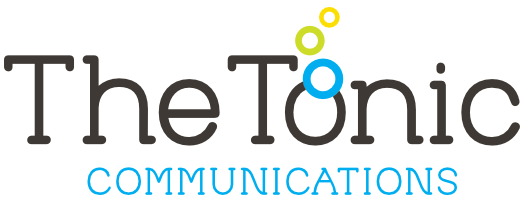“How do you measure PR?” It’s the million-pound question — and one that crops up frequently as part of our PR Strategy Clinic. In a world awash with data, you might think the answer would be simple. You’d be wrong. While measuring the impact of public relations is essential, doing it well isn’t always straightforward. The good news? There are frameworks, tools, and tried-and-tested methods that take the guesswork out and put the strategy in. Here, we break down how to measure PR in a way that’s meaningful, structured, evidence-based, ethical and — crucially — aligned with your organisation’s goals.
Why measurement matters
Getting value and a good return on every marketing pound invested means, PR teams face increasing pressure to prove their worth. Done well, measurement gives PR professionals the evidence needed to:
- prove the real value of PR
- secure buy in from leadership teams/Boards
- refine the approach
- drive results
- understand what’s working (and what isn’t)
- guide strategic decision-making
- links comms activity to wider business outcomes
- optimise future investments/campaigns.
But there’s a caveat. Not everything that counts can be counted. The real power of PR is often evidenced over a longer term: changing perceptions, strengthening trust, building reputation – all over time. That’s why measuring PR isn’t just about numbers. It’s about impact, too.
Enter the Barcelona Principles 4.0 – evolution not revolution
In 2010, the global PR community got serious about measurement. The original Barcelona Principles were introduced by AMEC (the International Association for the Measurement and Evaluation of Communication) to provide a global standard, akin to a North Star.
Fast forward to June 2025, and we have Barcelona Principles 4.0 — launched at AMEC’s global summit in Vienna and representing the most up-to-date thinking in comms measurement.
Key takeaways include:
- Set measurable goals first — strategy before metrics
- Focus on outcomes, not just outputs — impact over activity
- Use both quantitative and qualitative data — numbers and nuance
- Ban AVEs — discourage their use, it’s like comparing apples with pears
- Customise to stakeholders — show value in ways that matter to them
- Be transparent and consistent — your methods matter
- Measure across PESO — that’s Paid, Earned, Shared and Owned media.
You can dig into the new principles here: Barcelona Principles 4.0 – AMEC
Outputs, outtakes, outcomes: What’s the difference?
One of the most useful models for evaluating PR comes from the AMEC Integrated Evaluation Framework, which categorises impact into three layers:
- Outputs: What you produced — press releases, media coverage, social content, events.
- Outtakes: What the audience took from it — awareness, understanding, engagement.
- Outcomes: What changed as a result — behaviour, attitudes, trust, action.
While it’s tempting to stop at outputs (“we generated 200 pieces of coverage”), outcomes are where the real value lies. Did the audience do something differently because of your campaign? Did perceptions shift? Did they sign up, show up, or speak out? And if so, can we put tangible metrics on that?
The biggest challenge may be putting a collective focus across teams and client/agency partners -and an investment in charting the outcomes, rather than the outputs.
What to measure (and how)
Here’s how we approach measurement at The Tonic — whether we’re running a regional media campaign, a national awareness drive or a longer-term brand-building programme.
1. Start with strategy
PR objectives should flow directly from your organisational goals. If your aim is to increase footfall in your clinics, boost product sales, or shift perceptions around a health issue, your PR activity (and measurement) should be built to match. Tip: Use SMART or FAST objectives to keep things focused. That means goals that are Specific, Measurable, Achievable, Relevant and Time-bound — or, in the FAST version, Frequently discussed, Ambitious, Specific and Transparent.
2. Ditch the vanity metrics
While there’s a place for tracking volume (coverage, impressions, clicks), these should never be the sole indicators of success. Advertising Value Equivalents (AVEs) in particular have been widely discredited — and rightly so. As the CIPR’s professional practice review explains, AVEs offer “no reliable evidence to justify this approach” and their use is in steep decline.
Instead, opt for:
- Reach/impressions: Who saw the content, was the audience on that platform relevant to your ideal customer profile (ICP)?
- Tone and key messages: Was the coverage positive? Did it reflect the intended narrative? Did you pre-determine what messages you wanted to cut-through most frequently?
- Engagement: How did people respond — did they comment, share, or click? Did they spend time interacting with related content?
- Sentiment analysis: Is the conversation around your brand or issue becoming more positive?
- Conversion tracking: Did PR drive a measurable action, such as sign-ups, downloads, referrals or sales enquiries?
3. Layer your methods
Both quantitative and qualitative data matter. While analytics tools, media evaluation dashboards and Google metrics provide the numbers, qualitative insight helps you understand the ‘why’ behind the behaviour.
For example:
- Survey data can reveal attitude shifts
- Focus groups can explore sentiment in depth
- Stakeholder interviews can track reputation changes over time.
A ‘mixed-methods’ approach gives a fuller picture — and enables continuous learning.
4. Build benchmarks and track trends
PR success isn’t always instant and it will likely require a drip feed of messages over time to influence behaviour and encourage target audiences to take action. For campaigns aiming to change public opinion or behaviour, measurement should be designed to track progress over time. That means establishing a baseline, identifying benchmarks, and committing to regular reviews.
The CIPR encourages PR practitioners to adopt “evidence-informed methods” and to think beyond single campaigns to longer-term value. This is especially relevant in areas like healthcare or social change, where success may come gradually — but meaningfully.
5. Create a measurement culture
If you’re serious about improving performance, you need to bake measurement into your processes. That means:
- Setting KPIs at the planning stage and interrogating what insights they will deliver
- Allocating budget and time to evaluate, not an hour or two squeezed at the end of a campaign
- Using findings to inform future activity and learn as a team
- Reporting regularly and transparently.
Despite a whole host of tools and frameworks to support robust measurement, many organisations struggle with implementation. Common challenges include data silos where different tools don’t communicate effectively, making it tricky to create comprehensive measurement dashboards. Or, resource constraints might mean teams lack time or budget for sophisticated measurement approaches.
But, as the CIPR puts it: “Routine, high-quality evaluation is part of a culture of continual improvement.”
PR measurement tactics to avoid
Even with the best intentions, measurement can go wrong. Here are some common traps:
- Measuring everything: Focus on what matters most — not just what’s easy to count. Or you’ll drown in data that doesn’t offer meaning
- Confusing activity with impact: Just because you were busy doesn’t mean you were effective…
- Relying solely on media clippings: Coverage alone doesn’t equal success, we need to look beyond volume metrics
- Setting vague or unrealistic objectives: “Raise awareness” is a starting point, not an end goal – and how will you know when you’ve achieved it?
How The Tonic can help
At The Tonic, we combine decades of experience in comms with our TONIC strategic approach. This provides a framework for our PR Strategy Clinic, which is designed to help organisations — especially in healthcare, wellness, tech and green transport — to clarify goals, sharpen messaging and build campaigns that deliver.
That includes choosing the right metrics from day one, aligning them to outcomes that matter, and evaluating them with rigour. Whether you’re an SME marketing lead or a startup founder keen to make a splash, we’ll help you put proper measurement in place — and show the value of your comms investment.
Ready to measure what matters?
Measuring what matters can be a minefield. In our fast-paced industry, attribution remains particularly challenging. After all, PR’s influence on business outcomes is often indirect and occurs over extended timeframes. A piece of thought leadership content might influence a prospect’s decision months later, making direct attribution difficult.
The key is to have an approach to measurement that offers a picture that is as comprehensive as possible, which may not be a catch-all. In today’s competitive landscape, measurement isn’t optional; it’s essential for PR success and organisational growth.
If you’re tired of vanity metrics and want a smarter way to measure your PR, get in touch with our team. Book a free call with The Tonic’s PR Strategy Clinic and we’ll help you build a comms plan that’s as measurable as it is meaningful.
👉 Explore The Tonic’s PR Strategy clinic
👉 Or, contact us to see how we can help at hello@thetoniccomms.co.uk
How to Measure PR: A Practical Guide (+ Measurement Checklist)
The right tools are handy to support measurement. Platforms we use at The Tonic: Cision, Meltwater, Vuelio, Talkwalker, Google Analytics — all support PR KPI tracking across PESO channels.
How-to-measure-PR

